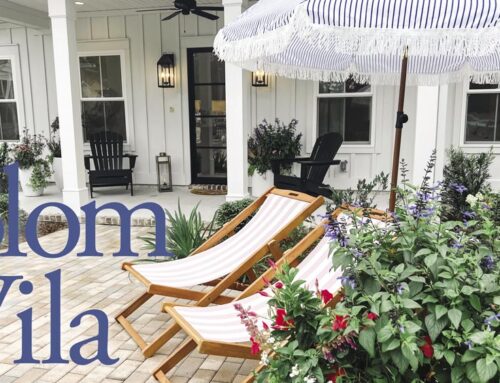
The Next Chapter in the Book of the
Cherry Hill House
Words By PAIGE GLAZER Photos By Voyage Creative
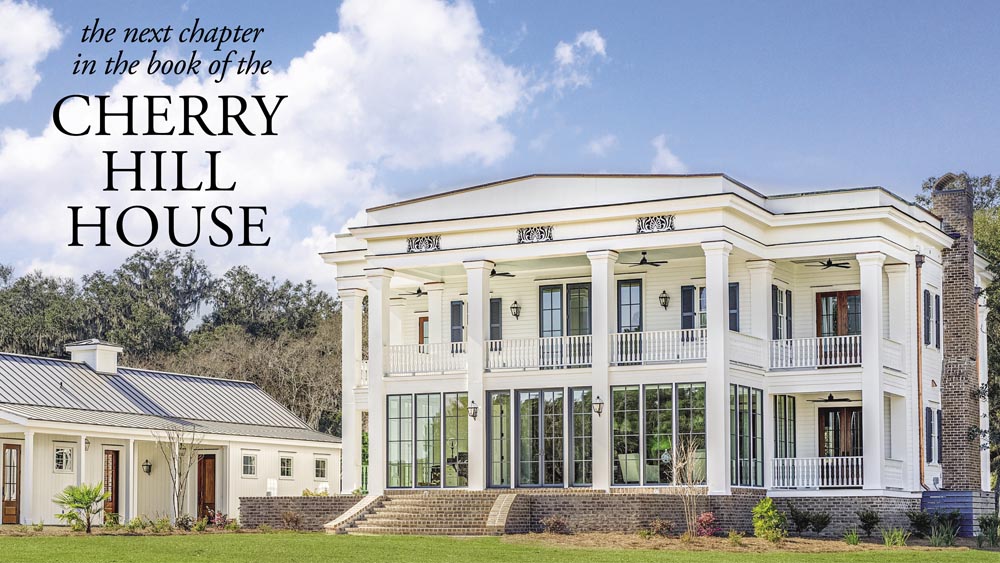
The multi-faceted story of the Cherry Hill House takes us back to a time before the Revolutionary War to 1764, when John Harn sold his Dublin Plantation to John Maxwell, son of James Maxwell, who owned Belfast Plantation.
It was from Dublin that John created a separate 300-acre tract of land and called it Cherry Hill Plantation. Maxwell’s loyalty to the King led to his Bryan County properties being confiscated. Presumably, the Maxwell family either re-purchased the property or it was returned to them after the War. In 1824, Richard James Arnold purchased the land from Maxwell and constructed the Cherry Hill House—a very short distance from where it stands today, inside the gates of the renowned Ford Field and River Club.
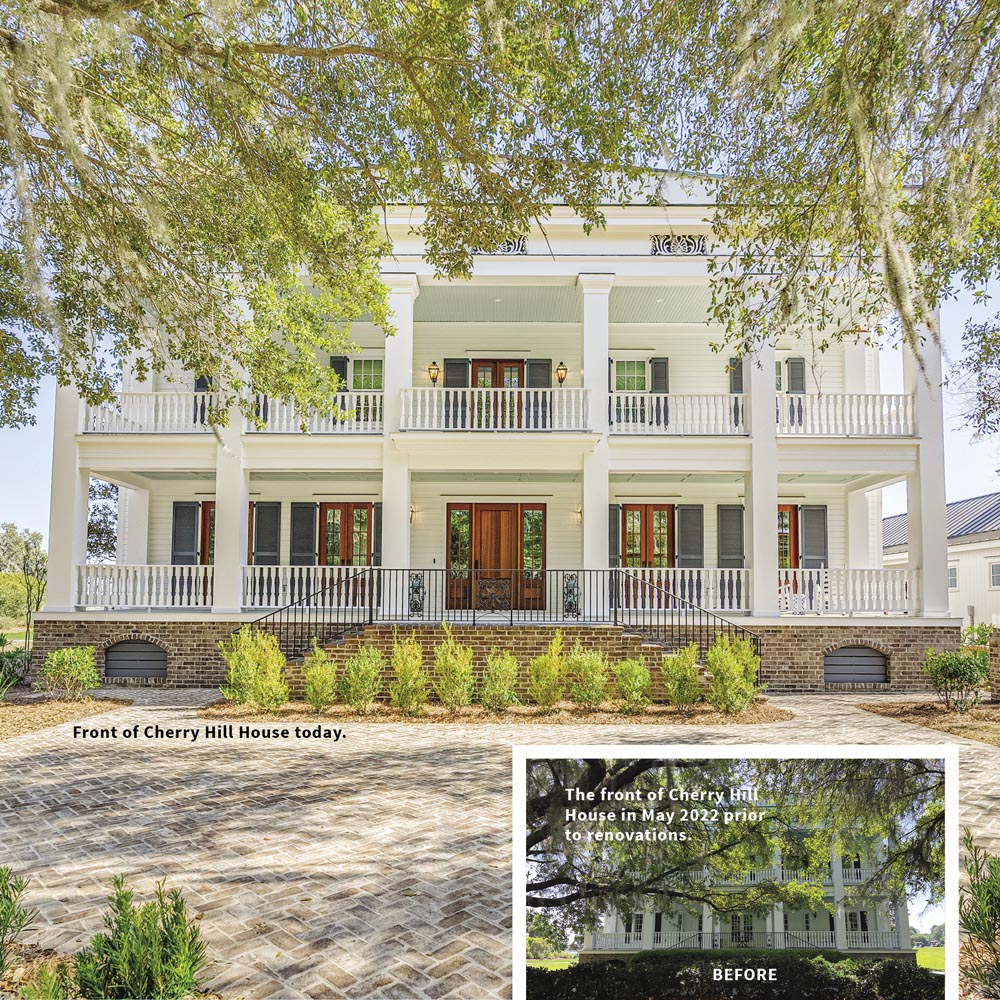
The storied past of the Cherry Hill property at large includes the original structure’s demise when General William T. Sherman made his infamous March to the Sea and burned everything in his path to Civil War victory at Fort McAllister. A second version of the home, built in the same location at the end of the oak alle that leads to the current day Ford Clubhouse, was constructed in 1874. From William Eliot Arnold to Dr. Julian Chisholm, to Henry Ford, Ghaith Pharoan and anyone in between, the story about the 300-acre tract of land becomes less exciting than the house situated upon it. Chapters of time document the structure being moved not once, but twice, before finding its place on the 9th green of the iconic Pete Dye golf course. Its latest chapter officially began on May 5, 2022, but the vision for it began nearly a decade ago when Trip and Ashley Addison first moved to The Ford.

Sitting at the island in her new kitchen, Ashley shares with me just how long she has had her eye on the Cherry Hill House. “While we were building our first home here in 2016, I would often look at this neglected home while riding the golf cart or walking our dogs, and think of how beautiful it could be. Often telling Trip, ‘It just needs some love, money and vision’. It became a dream of mine to restore Cherry Hill House to its full potential but looking back, I never thought it would become a reality.”

What that potential might take, Ashley says she and Trip were not positive. For years, the home had been part of The Ford’s rental pool and was sliding into noticeable decline. An interior designer by trade, Ashley had many questions about why some of the most fascinating elements of the structure had been compromised—the porches were closed off, an open floor plan forgone, likely for efficiencies that sadly found themselves dated and begging for attention. At some point in its more recent history, Cherry Hill House was transformed from a farm-style house into a duplex.

Those who know Trip and Ashley, know that they enjoy buying project homes and giving them a fresh remake before selling them to their next lucky inhabitants—they’ve done this several times since I met them some nine short years ago at a fundraiser for the Richmond Hill Historical Society. In between other reno projects, the couple made multiple unsolicited offers to the previous owner of Cherry Hill House to no avail, until it was! “We’d literally moved on!” says Trip. “We were working through the Architectural Review Board on a new build here when we learned that the previous owner of Cherry Hill House was willing to sell it. Luckily, we were able to pivot and made an offer!”
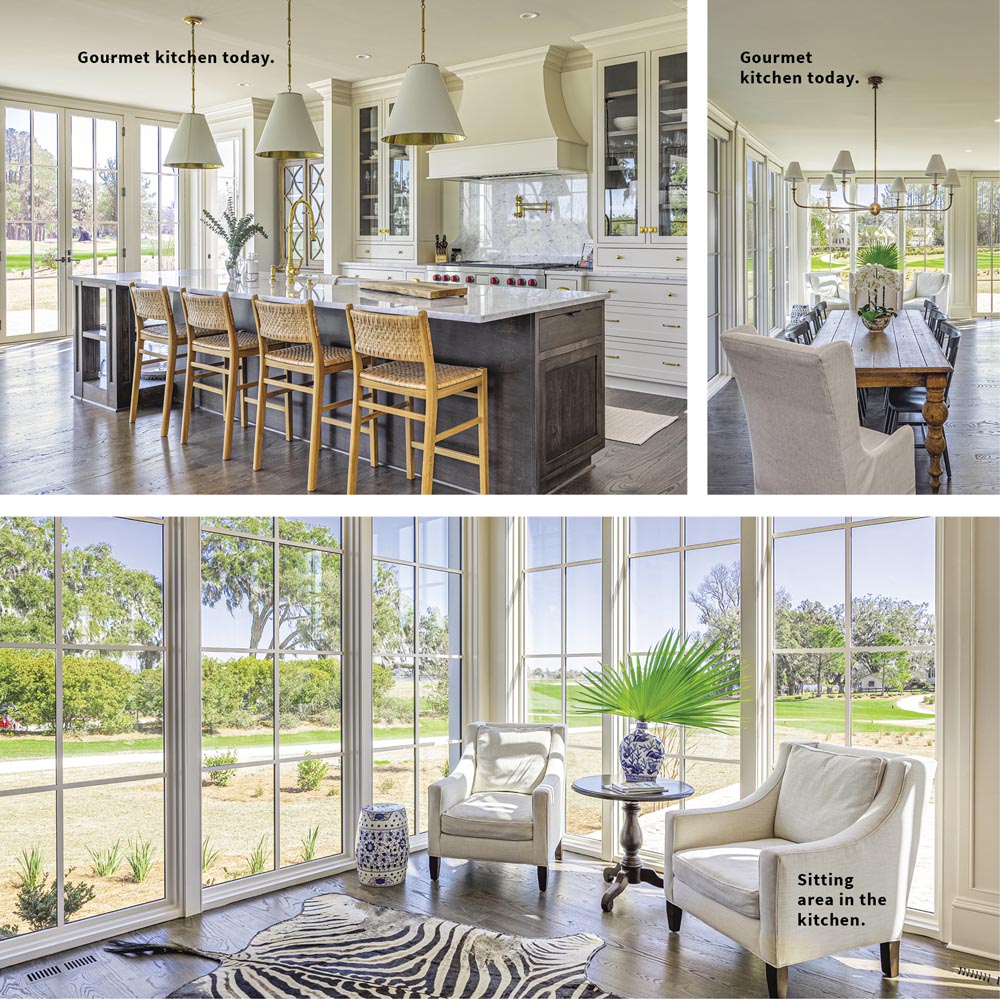
The Addisons closed on Cherry Hill House in May of 2022, with only a handful of images of the home in its original state. Apart from the photos in the archives at The Henry Ford Museum in Michigan, images of Cherry Hill House are scarce, thus making it basically impossible to complete the Georgia Department of Community Affairs Historic Rehabilitation program, a precursor that would allow the home to be placed on the National Register of Historic Places.
With the fact that the structure itself had undergone so many edits over the years, it would likely be unrecognizable after the Ford Era passed without the pictures a local member of The Ford took and gave to Ashley and Trip. It’s unclear when and why the modifications that really transformed the front and back elevations from those shown in the Ford images were made, but as the Addison’s peeled back the layers of time during the demo phase, they learned the latest renovation was done in the mid to late 80s, based on the date stamps on the studs. “We knew we wouldn’t be building the house that once was, so we set our sights on one that would continue to illustrate its deep-rooted history and ensure the Cherry Hill House would make it into the next hundred years,” says Trip. Their renovation offers modern luxuries with distinct nods to its long and storied past.
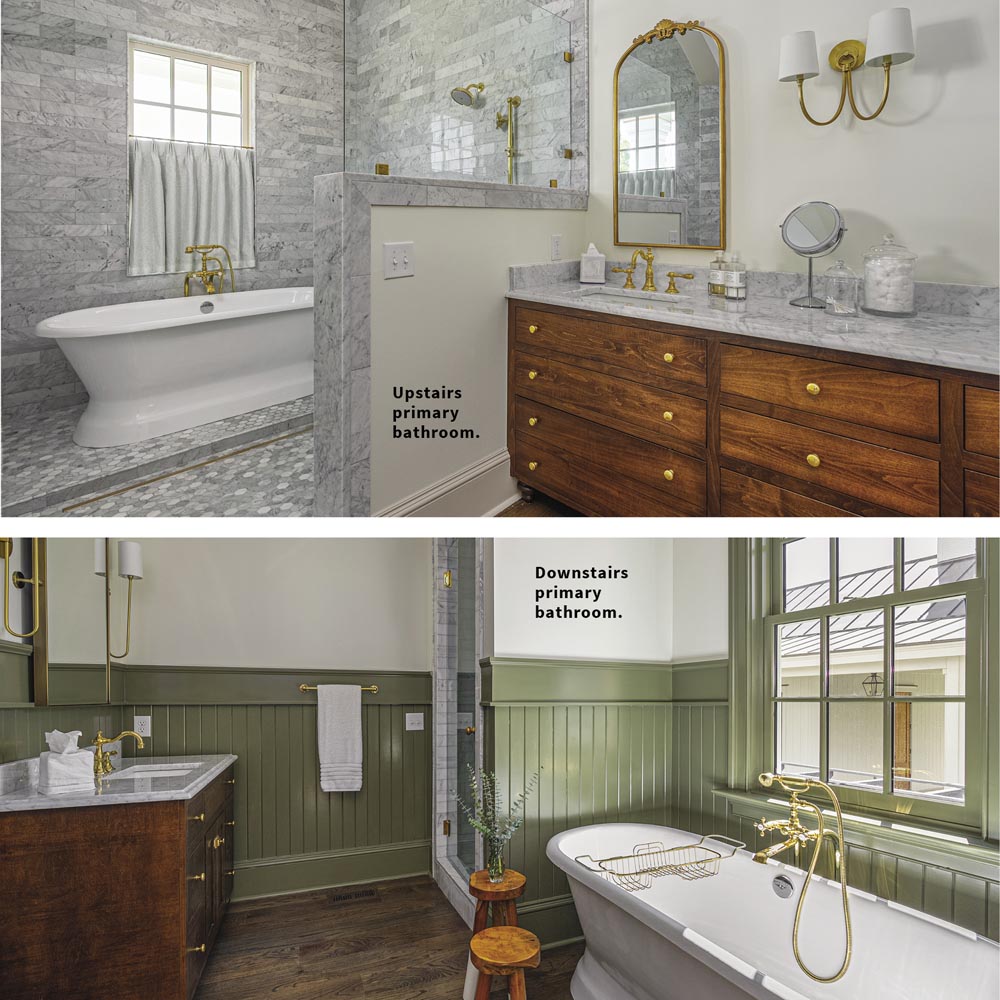
From the 300 acres dubbed Cherry Hill in 1764 to the 4,215 square foot single-family home on a .79-acre lot in 2024, some 260 years later, Cherry Hill House stands today steadfast amongst the same bellowing Live Oaks and Spanish moss as she always has. Today, she’s soaking in the same salty breeze while Ashley, Trip, their two children and two golden doodles make new memories. In this new chapter, the story will include little handprints and doggy nose smudges on the massive windows facing the morning sunrise. If the two original brick chimneys could only tell the stories of days gone by, when the chapters of her era were not as well documented, the design features may have resulted in a different look and feel, but instead they will reflect the sophisticated eye of the Addisons. The future is exciting for Cherry Hill House. She was re-envisioned and made perfect for a family to enjoy the beauty of her serene location.

To view the Cherry Hill house real estate listing, click here.




